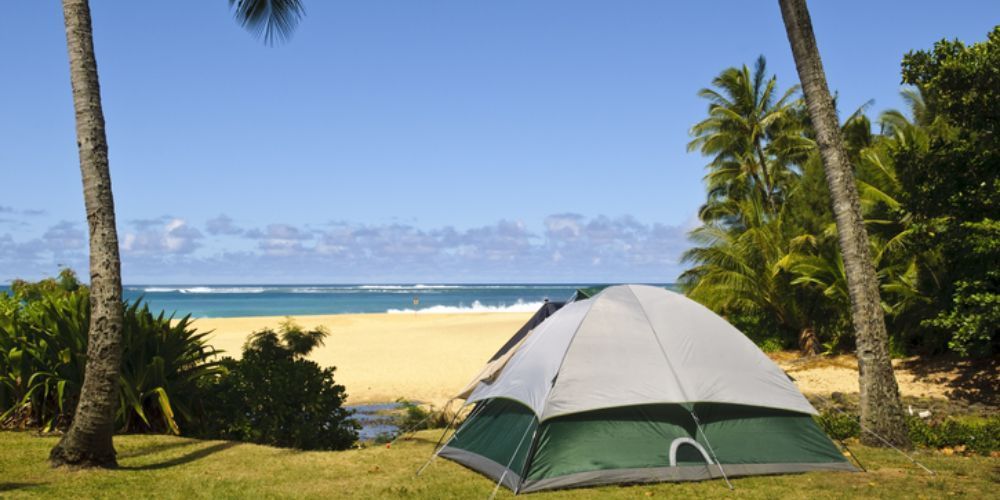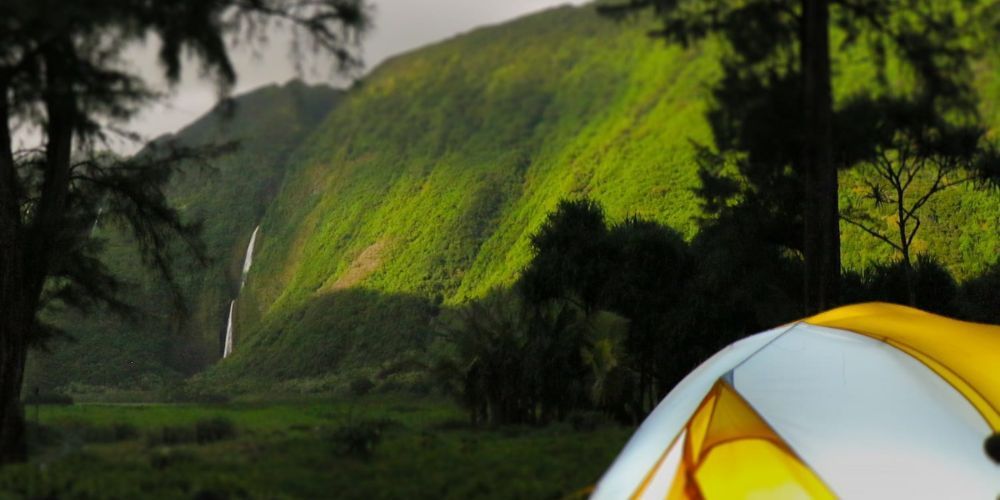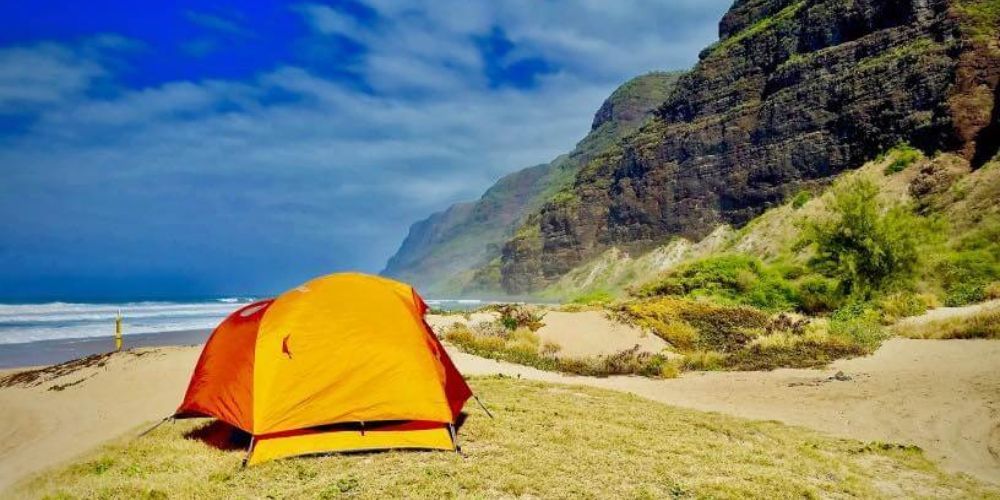Camping in Hawaii: Top Locations and Tips for Your Outdoor Adventure
Camping in Hawaii offers some of the most extraordinary outdoor experiences you can imagine. From waking up to breathtaking ocean views at Nā Pali Coast State Park to witnessing an unforgettable sunrise over the volcanic landscapes of Haleakalā National Park, every moment feels like a new adventure waiting to unfold.
This guide has been meticulously researched to ensure you have all necessary information for a successful trip—including which permits you'll need and insider tips on what gear to pack. Embark on your journey prepared and ready as we explore everything you need for the ultimate Hawaiian camping experience.
Some of the best camping spots in Hawaii include the beautiful Polihale State Park on Kauai, the stunning Haleakala National Park on Maui, and the lush Volcanoes National Park on the Big Island. Each location offers unique landscapes and experiences for campers looking to immerse themselves in Hawaii's natural beauty.

Top Campgrounds in Hawaii
The allure of camping in Hawaii is not just about sleeping under the stars; it’s the connection to nature, the unique landscapes, and the unforgettable experiences that come with it. For example, Nā Pali Coast State Park on Kauai is one of those breathtaking spots that beckons adventure lovers. Picture yourself standing atop a cliff, gazing at rugged sea cliffs that plunge into turquoise waters. The hiking trails here are not for the faint-hearted but reward those willing to tackle the challenges with unparalleled views. It’s essential to remember that permits are required for camping here—an investment in ensuring your trip is seamless and memorable.
Moving over to Maui, Haleakalā National Park invites visitors with stunning sunrise and sunset vistas from the crater. Camping within this national park provides a unique opportunity to experience the volcanic landscape up close. Choose between Hosmer Grove Campground, conveniently located near the summit, or Kipahulu Campground, situated by the ocean where you can hear nearby waterfalls cascading as you drift off to sleep. Each campground offers a different flavor of Hawaii's diverse environment, perfect for creating lasting memories.
If you're traveling with family, consider Bellows Field Beach Park on Oahu. This campground is particularly family-friendly, equipped with ample amenities and beachfront access, making it perfect for relaxed days spent enjoying sun and surf. Here, you can set up your campsite just steps away from white sands and gentle waves—ideal conditions for children to play and adults to unwind. The laid-back vibe here adds to its charm, making family bonding moments effortlessly cherished.
For those seeking an extraordinary landscape defined by volcanic activity, Hawaiʻi Volcanoes National Park on the Big Island should be on your bucket list. Here, you have the rare chance to camp near active volcanoes—a thrilling experience that reminds you of nature's raw power and beauty. Remember to stay informed about safety protocols when exploring such areas. The thrill of an evening spent by a glowing lava flow makes for incredible stories long after your camping trip has ended.
With these amazing locations in mind, let's explore what gear you'll need to ensure a comfortable and safe outdoor experience during your adventures.
Essential Camping Equipment
Preparing the right camping gear ensures a comfortable and enjoyable experience in Hawaii. This is not just about having fun; it's about ensuring your well-being amidst nature's beauty. Imagine sitting by the campfire after a long day of hiking, surrounded by breathtaking vistas, all while feeling secure in your setup. To make this vision a reality, you'll want to focus on a few key items.
A lightweight tent should be at the top of your list. When choosing a tent, look for one that offers excellent ventilation to combat humidity and heat; many tents are designed with mesh panels to promote airflow during those warm Hawaiian nights. The last thing you want is to feel claustrophobic while you're trying to relax under a starry sky.
Next, consider your sleeping arrangements. Opt for a lightweight sleeping bag with a temperature rating appropriate for the environment—this generally leans towards breathable materials that keep you warm without overheating. Remember, a restful night's sleep can make all the difference when exploring the beautiful trails by day.
Additionally, cooking gear is essential for preparing meals while you’re out in the wild. A portable stove paired with some durable utensils makes food preparation easier and transforms meal time into an enjoyable event rather than a chore. Aim for lightweight, non-perishable food items like energy bars or freeze-dried meals to save space in your pack.
Lastly, it’s absolutely critical to carry a water filtration system or purification tablets for your trip. Fresh water is not always readily available, especially if you're venturing off the beaten path into more remote areas. Having a reliable means to ensure safe drinking water cannot be overstated—it could be the difference between enjoyment and discomfort while camping in Hawaii's wilderness.
Once you have your gear sorted out, preparing for changing weather conditions will help you tackle whatever challenges arise during your adventures ahead.
Hawaiian Weather and Best Seasons
Hawaii experiences a tropical climate with average annual temperatures typically ranging between 70°F to 85°F. This mild and consistent weather creates an inviting backdrop for outdoor adventures, but knowing how it changes throughout the year is crucial to your planning.
1. Dry Season (April to October)
The dry season is deemed the best time for camping in Hawaii. With minimal rainfall and sunny days, you'll find perfect weather for hiking, swimming, and soaking in everything these beautiful islands offer. However, this period is also popular among tourists, which means many campgrounds can get crowded. If you’re planning to camp during these months, make it a priority to book your spot well in advance.
At the same time, being aware of your surroundings and potential hidden gems enriches the camping experience.
2. Wet Season (November to March)
Conversely, the wet season brings increased rainfall and unpredictable weather patterns. While fewer visitors mean more privacy and serenity at campsites, you must be prepared for muddy trails and possible flash floods. It's essential to choose your location wisely during this time—some areas may become challenging or even unsafe to navigate due to excessive water saturation. In addition, certain campgrounds may close during heavy rain events for safety reasons.
Being flexible in your plans can pay off; if you find a stretch of good weather amidst the wet season, it could lead to some incredible experiences without the crowds—just remember to pack waterproof gear! Also, consider checking local forecasts frequently as they can change rapidly in Hawaii's lush environment.
Understanding these climatic conditions and preparing accordingly sets the foundation for an unforgettable experience in nature while exploring all that Hawaii has to offer.
Exciting Outdoor Activities
One cannot fully appreciate the allure of Hawaii without diving into its myriad outdoor activities, each presenting a new way to connect with the islands' stunning natural beauty. The adventures are not just thrilling; they offer unique experiences that create unforgettable memories.
Hiking stands out as one of the best ways to immerse yourself in the indigenous flora and fauna while unveiling breathtaking views accessible only on foot. For instance, trekking along the Kalalau Trail on Kauai allows you to traverse lush valleys and rugged coastlines. Meanwhile, the Pipiwai Trail on Maui takes you through bamboo forests leading to the enchanting Waimoku Falls.
As you lace up your hiking boots, don’t forget that Hawaii is also famous for its crystal-clear waters, inviting you to explore an aquatic paradise.
Snorkeling reveals a vibrant world beneath the surface, teeming with colorful marine life. Take a trip to Hanauma Bay on Oahu, where the emerald waters create a perfect setting for spotting tropical fish and sea turtles gliding by. For something special, Molokini Crater off Maui is a crescent-shaped submerged volcanic caldera that attracts snorkelers from around the globe due to its exceptional visibility and diverse marine ecosystem. Remember to respect the environment while enjoying these underwater escapades; refrain from touching corals and take care not to disturb the delicate balance of life beneath the waves.
After soaking up some sun under the sea, you might feel a surge of energy calling for a more thrilling challenge: surfing.
Surfing, almost synonymous with Hawaiian culture, offers another exhilarating way to engage with the Pacific Ocean. While Oahu's North Shore is legendary for its gigantic swells, it can become crowded with surfers looking for their moment of glory. For those craving a quieter experience, consider exploring lesser-known surf spots like Hanalei Bay in Kauai or Lahaina in Maui. Here, you can find fewer crowds and perfect waves that cater to both novice surfers and seasoned pros alike. Whether you're catching your first wave or honing advanced techniques, Hawaii's surf scene boasts something for everyone.
And let us not forget about how spectacular Hawaii is beyond ocean adventures—its unique wildlife invites exploration too.
Birdwatching enthusiasts will find themselves enchanted in Hawaii, which boasts some of Earth's most distinctive bird species found nowhere else. The forests echo with calls from native birds like the 'I'iwi and 'Apapane as they flit among vibrant flowers. Places such as Haleakalā National Park (Maui) or Kauai's Alaka'i Swamp provide ideal settings for spotting rare feathered friends while enjoying serene walks through unparalleled natural landscapes. A pair of binoculars and a local bird guidebook can transform your trek into a mesmerizing journey through Hawaii’s avifauna.
In every corner of Hawaii lies an opportunity waiting for you to embrace adventure and discovery. Engaging with these natural wonders seamlessly leads to exploring even more captivating sights across the islands.

Scenic Landscapes to Explore
Hawaii is truly a marvel of nature, boasting a plethora of breathtaking landscapes. Each island presents its own unique set of vistas, making it vital to plan your route wisely. From lush valleys to dramatic coasts and mesmerizing waterfalls, every corner reveals something magnificent just waiting to be explored.
1. Waimea Canyon (Kauai)
Often called the "Grand Canyon of the Pacific," Waimea Canyon is an essential stop for anyone visiting Kauai. Its vastness is humbling, with over 3,600 feet deep and filled with vibrant reds and greens that create an artistic masterpiece.
The canyon not only offers breathtaking views but also caters to hiking enthusiasts and photographers looking for the perfect shot. Numerous lookout points provide stunning panoramic views that change with the light throughout the day. Early mornings are particularly magical when the fog begins to lift, revealing layers upon layers of rugged terrain and waterfalls cascading down the cliffs.
2. Valley of the Temples (Oahu)
Just as vital as the dramatic landscapes are serene spots like the Valley of the Temples on Oahu. This tranquil area encompasses lush gardens and peaceful vistas, offering visitors a calming atmosphere ideal for reflection and relaxation. Home to a replica of Japan's Byodo-In Temple, it provides both spiritual enrichment and visual beauty.
Take a leisurely stroll through the gardens, breathe in the fresh air, and listen to the gentle sounds of nature around you; it’s a perfect escape from busier tourist spots.
While valleys and temples offer respite, there's something exhilarating about coastal drives—especially Hana Highway on Maui.
3. Hana Highway (Maui)
The Hana Highway transforms a simple drive into an adventure filled with stunning waterfalls, tropical foliage, and breathtaking coastal views. This winding road stretches for approximately 64 miles along Maui's north coast and features over 600 turns and 50 bridges—it can be quite the journey!
Each curve unveils yet another picture-perfect view or hidden waterfall enticing you to stop and explore. However, be prepared: this narrow road can be challenging for less experienced drivers. It's best to take your time, enjoy each stop along the way, and perhaps even pack a picnic to enjoy at one of the scenic lookouts.
With all these extraordinary landscapes awaiting your discovery in Hawaii, understanding how to manage your budget effectively becomes crucial for maximizing your adventures.

Camping Fees and Budget Planning
When it comes to planning a successful camping trip in Hawaii, knowing the potential costs is essential for creating an effective budget. While the natural beauty of the islands can entice you to explore every rough trail and pristine beach, understanding your financial obligations ensures you won’t run into money-related hiccups during your adventure.
To streamline your budget, it's important to note both permit fees and additional costs associated with each campground.
- Nā Pali Coast State Park: $20 - Transportation, gear
- Haleakalā National Park: $15 - Entry fee, camping gear, food
- Bellows Field Beach Park: $12 - Activities, food, gear
- Hawaiʻi Volcanoes NP: $10 - Park entry fee, specific site fees
The list provides a clear picture of what to expect when budgeting for various campgrounds throughout Hawaii. Remember that while some parks may have lower fees, other costs—like transportation or specialized gear—can add up quickly if unplanned. For example, parking fees at certain locations can reach higher prices depending on demand. It's wise to research these factors in advance.
One tip that’s always worked well for me is to look out for package deals or early bird discounts. Many locations offer deals if you book well in advance or rent equipment. Such savings can be put toward enjoying local activities or trying delicious Hawaiian food. Additionally, it’s always smart to maintain a small emergency fund within your budget to handle unexpected situations like a last-minute gear purchase or a change in campsite plans.
Fully equipped with budget insights, let’s turn our focus towards ensuring safety during your trip.
Tips for a Safe Camping Experience
Safety is paramount when camping in unfamiliar territories like Hawaii, where diverse landscapes present unique challenges. First and foremost, it’s essential to know the terrain. Before setting off for your adventure, take some time to study detailed maps of the area to familiarize yourself with your surroundings. It might seem straightforward, but understanding where trails begin and end can save you from getting lost in dense forests or rugged mountains. Ensure you have a reliable GPS device on hand; being lost can turn a thrilling trip into an unsettling experience.
Next on the list is to maintain a keen wildlife awareness. Hawaii is home to fascinating wildlife that can surprise unsuspecting campers. Wild boars roam in some forested areas; while they may appear harmless, it's best to observe them from a safe distance. Always be cautious around locations with larger animals; stepping into their territory could provoke unwanted interactions. Consider carrying bear spray as an extra precaution in remote areas, even if bears are less common in Hawaii compared to other regions.
Equally important is water safety. The ocean's allure can be irresistible, with stunning beaches inviting you for a dip. However, only swim in designated areas where lifeguards are present; these zones are established for a reason. Take note of posted signs indicating any potential hazards such as rip currents that can quickly pull unsuspecting swimmers into deeper waters. If you're not experienced in ocean conditions, stay close to shore and enjoy the water safely.
As dusk falls and stars begin to twinkle above this beautiful landscape, another aspect of safety comes into play: fire safety. Campfires can enhance your outdoor experience by providing warmth and light. Always follow local regulations about fires and keep them small and manageable. Never leave a fire unattended, and be sure to fully extinguish it before turning in for the night. A small ember left smoldering may lead to dangerous consequences if there's wind or dry conditions.
Finally, stay connected among your group or traveling companions by establishing a meeting point should anyone stray too far during hikes or excursions. This fosters a sense of security and ensures everyone knows where they can regroup if needed.
With these fundamental tips in mind, you’re all set for an exciting yet safe camping experience amidst the breathtaking landscapes of Hawaii. Adventure awaits!
In ensuring your safety and preparation, you'll maximize both enjoyment and peace of mind during your outdoor adventures in paradise.
Essential Gear and Tips for Success
Author: William Flaiz
Check out these other activities in Hawaii
Check out activities in these nearby states: Washington , Oregon , California , Alaska
